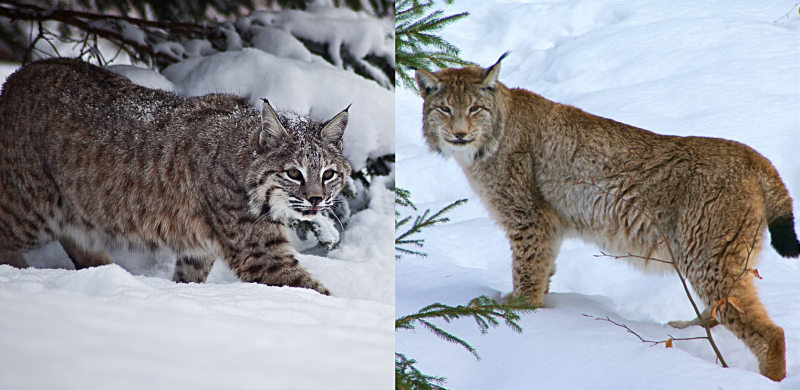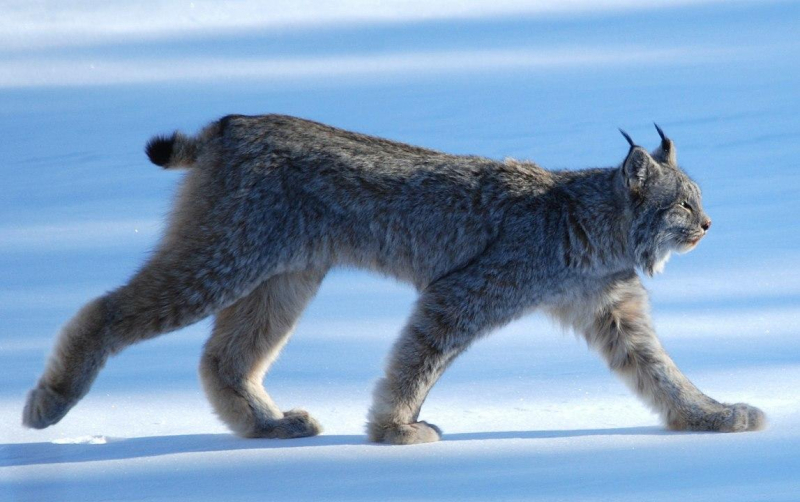Bobcats and Canada lynx are not the same thing
Although bobcats are a species of lynx (another recognized name for them is the bay lynx; more on that in a moment), the term is more frequently used to refer to the Canada lynx in North America. These two species appear to be remarkably similar at first glance. After all, they are both medium-sized cats with stumpy tails and pointy ears that have comparable proportions. However, there are some clear distinctions between them.
First off, the Canada lynx has slightly longer limbs and larger feet than other lynx species. Bobcats have short, reddish-brown coats with distinct markings, whereas lynx have shaggy, gray coats with faded spots. This is another significant difference between the two species. If you were to compare their hindquarters, you'd notice that a bobcat has black bands on its tail, whereas a lynx's tail only displays a solid black tip. Also, lynx ears have longer tufts.
However, the areas where these cats genuinely diverge from one another are in terms of lifestyle choices. The lynx is a cat that inhabits colder climates and lives farther north and at greater altitudes. These hunters can easily pursue prey like snowshoe hares thanks to their enormous paws, which behave like snowshoes. In contrast, bobcats are adapted to warmer climates. Additionally, bobcats have a more varied diet than lynx and may readily pursue birds, small mammals, reptiles, and deer. Lynx primarily consumes hares. Another interesting fact is that bobcats are far more violent than other cats. Some zookeepers refer to them as the "spitfires of the animal kingdom."








